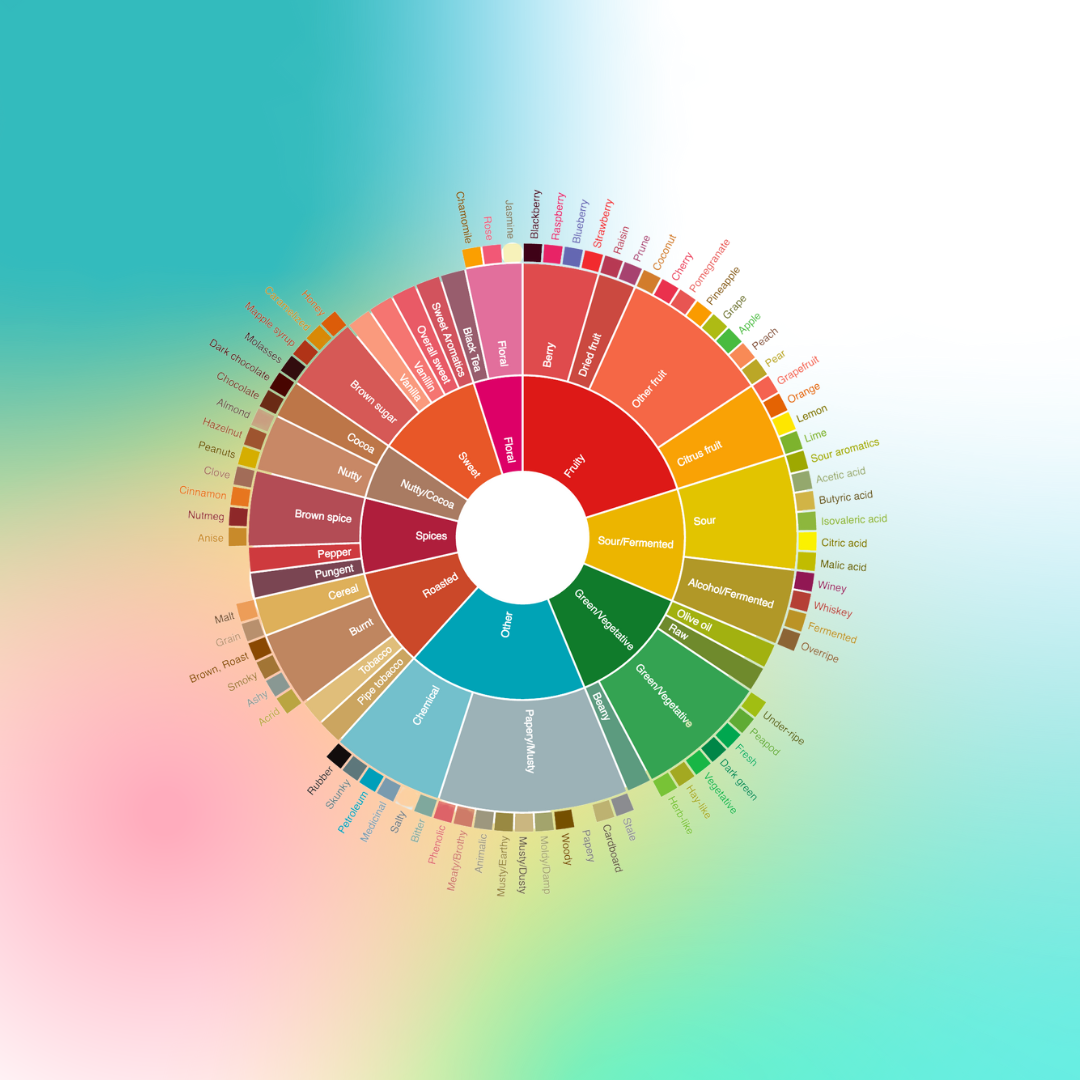Tasting Notes
We’ve all seen them.
Apples? You’re telling me this coffee tastes like apples?
Raspberry ripple? There’s just no way!
Well… It’s neither right or wrong to pop a tasting note on a coffee, and though this feels slightly contradictory, let’s just look at this quickly and have a think.
Coffee can be a very complex beast. With the right care and attention when cultivating the plant, harvesting the cherries, processing the seeds, roasting the beans and brewing the coffee, you can find coffees that taste like strawberry jam; or jasmine tea; or freshly picked green apples.
You can also have all of the above carried out the same way with one blip in the process and be left with a very dull, dry, rancid cup of coffee fit only for the kitchen sink.
But why is this?
Well, coffee has over 800 compounds that contribute directly to its flavour. Each of these compounds will be either stronger or weaker in concentration than the next and this will determine which flavours stand out the most.
On top of this, our own experiences of flavour impact what we taste. As an example, if you ask me what black tea tastes like, I would lean closer to the description of Earl Grey tea than I might to Assam tea as I have more experience with Earl Grey tea. It’s still black tea, just my perception of black tea.
Here’s a game: Think of a chocolate fudge cake. What comes to mind first? Is it the pillowy texture of the cake itself? The rich fudge filling? Or the good whiff of the icing on top? There are aspects of a chocolate fudge cake we would all recognise as chocolate fudge cake, but we all might have our own way of describing it.
To guide us in articulating the flavour experience of a coffee, we’re fortunate enough to have helpful tools. In 1995 the Specialty Coffee Association created a flavour wheel to help coffee tasters and fans better explore the flavours in their coffee cup.
In 2016 the flavour wheel was refined once more and updated to make it easier to understand. We start in the centre of the wheel with 9 basic descriptors: Roasted, Spices, Nutty/Cocoa, Sweet, Floral, Fruity, Sour/Fermented, Green/Vegetive and Other. Have a look at the bottom of the page, you’ll see the flavour wheel in all its glory.
After describing the most dominant character, we then work outwards from the centre to identify how specific the flavour is. In the second ring we have 28 flavours to best describe the flavour of the coffee. This is then followed by a third ring of 55 further descriptors which are considered to be as specific as most of us can taste.
As an example, you might taste a coffee that is noticeably sweet. Working outwards, this sweetness might be more brown sugar than it is vanilla. So then we might like to think about which brown sugar note this is and agree that this brown sugar is like molasses. By using this wheel we’ve narrowed down ‘Sweet’ as a descriptor, to ‘Molasses’ as a tasting note. Cool, huh?
DIY
Next time you get your paws on a box of our coffee - give it a go and see if you agree! If you taste anything else, we’d love to hear from you so do drop us a line!
Marcus, Sanctuary Coffee

